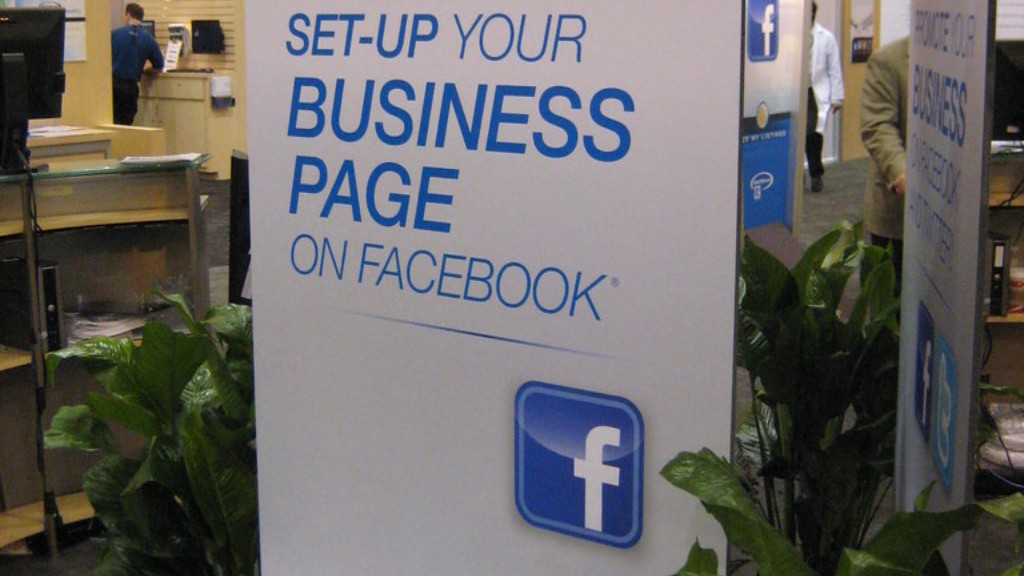Market share is often one of the key factors that marketers use to help create marketing objectives and strategies. By understanding a brand’s or company’s market share, marketers can develop an understanding of how much of the market is controlled by the company or brand. This information can then help to inform marketing objectives and strategies. For example, if a company has a small market share, it might focus its marketing efforts on increasing that share. Conversely, if a company has a large market share, it might focus its marketing efforts on maintaining or growing that share. In either case, market share is a key consideration for marketers as they develop objectives and strategies.
Market share is the percentage of a market that is controlled by a particular company. It is often used as a key metric to track the success of a company’s marketing objectives and strategies. By increasing market share, a company can increase its profits and become a dominant player in its industry.
Market share is a key indicator of market competitiveness because it enables executives to judge total market growth or decline, identify key trends in consumer behavior and see their market potential and market opportunity. By tracking market share, executives can make informed decisions about where to allocate resources to grow their business.
There are a few key goals of market share objectives:
1. To increase market share – this is the ultimate goal of any business and market share growth should be an unavoidable objective of any comprehensive marketing plan.
2. To track the company’s rate of new customer acquisition – this is an effective way to gauge a marketing plans contribution to growing market share.
3. To gain a better understanding of the market – by understanding the market share, businesses can better understand their place in the market and make more informed decisions about marketing strategies and objectives.
4. To build brand awareness and equity – market share can be a key driver of brand awareness and equity, especially in markets where there is a lot of competition.
5. To generate revenue and profits – ultimately, businesses want to generate revenue and profits and market share growth can be a key driver of this.
How do you develop marketing objectives
It is important that all of your marketing objectives meet the SMART criteria in order to be successful. This means that they should be specific, measurable, achievable, relevant, and time-based. By ensuring that your objectives meet all of these criteria, you will be able to create a more effective marketing plan that will help you to achieve your desired results.
Marketing objectives are the outcomes that a brand wants to generate from its marketing activities. They should be measurable so that you can map out your efforts in a strategic and focused way.
Some common marketing objectives include generating awareness, generating leads, driving traffic, and increasing sales. To be successful, your marketing objectives should be aligned with your overall business objectives.
When setting marketing objectives, it’s important to keep the following in mind:
1. Be realistic in what you can achieve.
2. Set measurable goals so you can track your progress.
3. Make sure your objectives are aligned with your overall business objectives.
4. Be strategic in your planning so you can focus your efforts in the right areas.
5. Keep your objectives SMART: Specific, Measurable, Achievable, Relevant, and Time-bound.
Market share is a key metric for businesses because it directly correlates to revenue and profit. The higher the market share, the higher the revenue and profit. Additionally, market share is a key indicator of competitive advantage. The higher the market share, the more difficult it is for competitors to enter the market.
A company’s market share is the portion of the total market for its products that it controls. The impact of market share on a company can be significant. A company with a large market share can operate on a larger scale and be more profitable than a company with a small market share. A company with a large market share can also develop a cost advantage over its competitors.
If a company wants to increase its market share, it should focus on strategies that will help it gain a larger share of the market. This can include things like increasing advertising, expanding its distribution channels, or introducing new products. Increasing market share can help a company increase its revenue and profitability.
Marketing objectives are important for businesses because they provide a focus for the marketing team and help to ensure that the team’s activities are consistent with the overall aims and objectives of the business. Without clear marketing objectives, it would be difficult for businesses to measure their progress and determine whether their marketing activities are effective.
Market share is an important metric for businesses to track because it directly corresponds to the company’s revenue. The larger a company’s market share is, the more revenue it generate. Additionally, companies with large market shares are typically industry leaders and have substantial competitive advantages over smaller companies.
To calculate a company’s market share, simply divide the company’s total revenue by the industry’s total revenue. For example, if a company has a total revenue of $100 million and the industry’s total revenue is $1 billion, then the company’s market share is 10 percent.
There are a number of ways to increase market share, such as offering lower prices, investing in marketing and advertising, and developing new products or services.
An effective marketing strategy is essential for any business. To create an effective marketing strategy, you need to understand your customers, how to motivate them, and your competition. With this knowledge, you can create a plan to reach your target market and achieve your business goals.
What are marketing objectives examples?
1. Increasing brand awareness can be achieved through various marketing channels such as social media, online advertising, PR, etc.
2. Boosting brand engagement can be done by creating compelling content, hosting events or engaging in social media campaigns.
3. Ranking higher in search results can be achieved through Search Engine Optimization (SEO) techniques such as keyword research and optimizing website content.
4. Increasing website traffic can be done through effective marketing campaigns and by creating compelling content that drives traffic from other sources.
5. Generating qualified leads can be done by targeting your marketing efforts towards a specific audience and creating content that speaks to their needs.
6. Increasing revenue can be achieved by driving more qualified leads through your marketing funnel and by ensuring that your sales team is effective in closing deals.
7. Increasing customer value can be done by providing an exceptional customer experience, offering valuable products or services, and building long-term relationships.
8. Establishing brand authority can be done by create a strong brand identity, being an industry leader in your field, and producing high-quality content.
A strategy is the approach you take to achieve a goal. An objective is a measurable step you take to achieve a strategy. A strategy is no good without objectives, and objectives are no good without a strategy.
How do you achieve strategic objectives
It is often said that the best laid plans often go awry. This proverb is especially true when it comes to business strategy. No matter how well you think you understand your industry and your customers, there will always be unforeseen obstacles and challenges that can throw a wrench in your best-laid plans.
That being said, there are certain things you can do to increase the chances of your strategic plan coming to fruition. Below, we’ve outlined six tactics for achieving your strategic plan.
Tactic 1: Establish Your Vision, Mission, and Overarching Goals
The first step to achieving your strategic plan is to have a clear and concise vision for your business. This can be done by drafting a mission statement that outlines your business’s purpose and goals. Once you have your vision and mission in place, you can begin setting attainable goals that will help you achieve your strategic plan.
Tactic 2: Measure Your Progress
To ensure that you are on track to achieving your strategic plan, it is important to measure your progress along the way. This can be done by setting milestones and KPIs (key performance indicators) that will help you track your progress and identify any areas that need improvement.
Tactic 3: Turn
The four Ps of marketing are product, price, place, and promotion. They are an example of a “marketing mix,” or the combined tools and methodologies used by marketers to achieve their marketing objectives. The 4 Ps were first formally conceptualized in 1960 by E. Jerome McCarthy in his book, Basic Marketing: A Managerial Approach.
Product refers to the physical good or service that a company offers for sale. This can include everything from food and drink to electronics and fashion.
Price is the amount of money that a customer pays for a product. It is important for businesses to set a price that is competitive, but also covers the costs of production.
Place is the location where a product is sold. This can be online, in a physical store, or through a distributor.
Promotion is the process of marketing a product to potential customers. This can be done through advertising, public relations, or direct marketing.
The price-to-earnings ratio is a good indicator of how expensive a stock is relative to its earnings. A high price-to-earnings ratio means that the stock is more expensive than its earnings would suggest. A low price-to-earnings ratio means that the stock is cheaper than its earnings would suggest. The beta is a good indicator of how risky a stock is compared to the rest of the market. A high beta means that the stock is more volatile than the market, and a low beta means that the stock is less volatile than the market. Dividend stocks are a good choice for investors who want to park their money in a safe investment. Dividend stocks tend to be less volatile than the overall market, and they offer the potential for income in the form of dividends.
A market leader is a company that has the largest market share in an industry. This gives them a lot of advantages, including strong prestige and brand value. Strong brand loyalty also enables them to not only retain existing customers but also attract new ones. A market leader also tends to be aware of the purchasing decisions made by its consumer base, owing to access to large datasets. This allows them to tailor their offerings to better meet the needs of their customers.
Warp Up
Market share is the portion of a market that is controlled by a company. It is usually calculated as the company’s sales divided by the total sales of the entire market.
Market share can help create marketing objectives and strategies in several ways. First, it can be used to set sales goals. For example, if a company has a market share of 20%, it may set a goal to increase that to 30%. Second, market share can be used to identify target markets. For example, a company with a small market share in a particular industry may decide to focus its marketing efforts on that industry. Finally, market share can be used to assess the effectiveness of marketing campaigns. For example, if a company’s market share decreases after a marketing campaign, it may conclude that the campaign was not effective.
A company’s market share is the percentage of the total market for its products that it owns. A high market share gives a company economies of scale, which means it can produce its goods at a lower cost per unit than its competitors. This lower cost allows the company to charge a lower price, which helps to increase its market share even more. A company with a large market share can use its economies of scale to cut prices and force smaller competitors out of the market.





